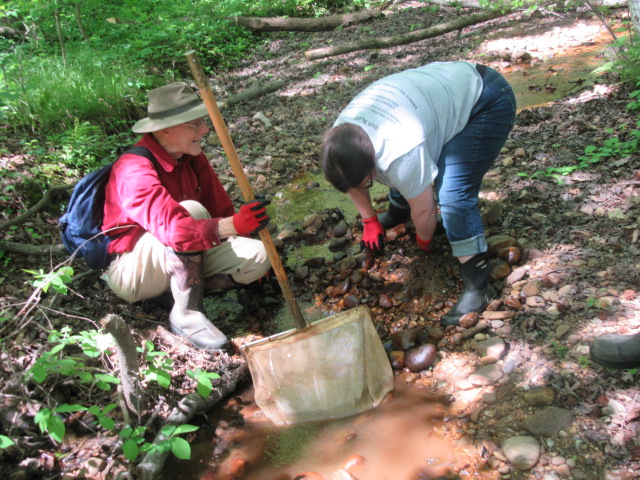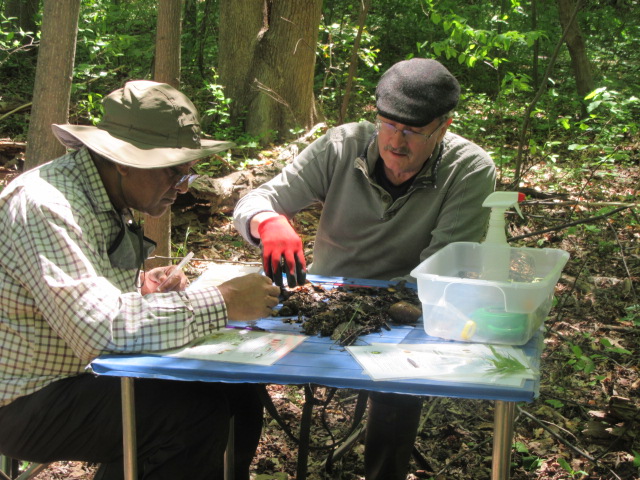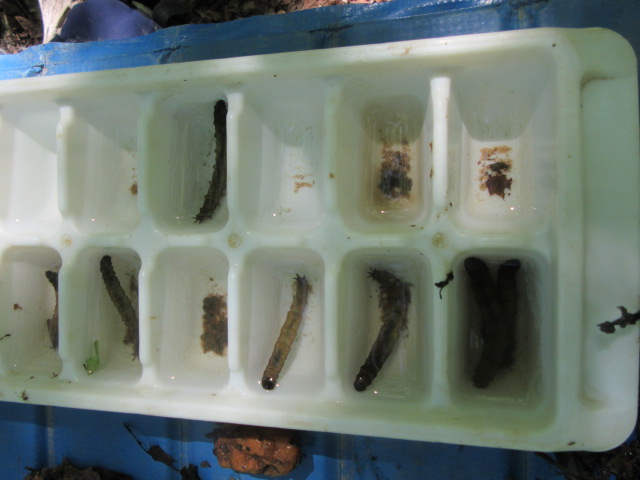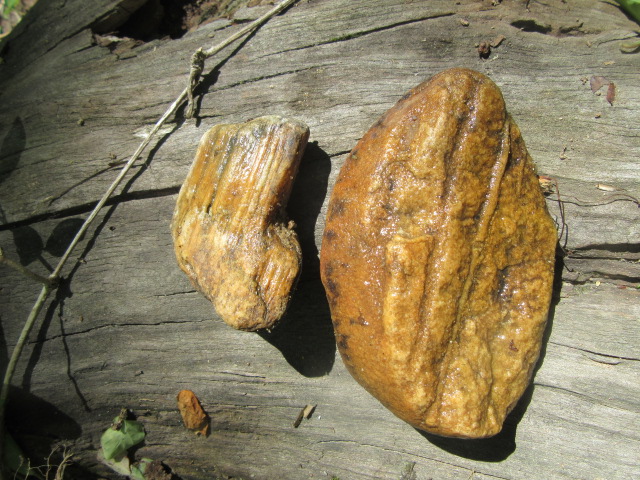FODMers Determine Habitat Quality of an Area Stream
Since 2016, FODM volunteers have conducted habitat quality monitoring in an unnamed, intermittent stream that flows through Mount Vernon Park into west Dyke Marsh, most recently on April 11 and May 10, 2022.
 |
| Volunteers scooped up sediments from the stream bottom. |
The 2022, 2021 and 2019 ecological stream scores are considered an indeterminate ecological condition, according to the leader, Ashley Palmer with the Northern Virginia Soil and Water Conservation District.
Biological data, like macroinvertebrate sampling, can indicate long-term health trends, depending on the number and diversity of organisms found. Some species are tolerant of degraded environments and others are very sensitive. Over 80 percent of Fairfax County’s streams are impaired.
 |
| Clarence Monteiro and Randy Myers sorted through sediments to find macroinvertebrates. |
 |
 |
|
| Examples from the day’s efforts. Many are true flies. |
Palmer explained that a worm-like creature from the Cretaceous period burrowed and created these tunnel-like markings in these rocks that likely came from Virginia’s Blue Ridge Mountains. |
| DATE | SCORE |
| 2022 May 10 | 9 |
| 2022 April 11 | 12 |
| 2021 May 27 | 9 |
| 2021 April 9 | 15 |
| 2020 June 26 | 3 |
| 2019 April 16 | 6 |
| 2018 May 5 | 9 |
| 2017 | Too Dry |
| 2016 May 11 | 6 |
Process and Scores, 2016 to 2022
The group typically takes 20 samples from the stream within a 100-meter span, with the goal of identifying 100 living benthic macroinvertebrates.
The scoring system that rates ecological condition is as follows: greater than 14, acceptable; 8 to 14, partially acceptable; less than 8, unacceptable.
Dates of sampling and scores from the stream we sampled are shown in the table at right.
Why Monitor?
This stream only has flowing water for part of the year and is fed by springs and a high seasonal groundwater table. The stream brings water from the streets and other impervious surfaces surrounding Mount Vernon District Park into Dyke Marsh, along with anything it picks up along the way like roadside debris or other pollution.
Because the stream dries up yearly, the organisms that can live there are limited. Palmer explains, “At this site, we instead look at seasonal trends and confirm the continued presence of macroinvertebrates. Each year we ask, ‘Are we finding macroinvertebrates? Are they the same ones as last year?’ And when we collect data each year to confirm, we find that the answer is, “Yes.”
All the data from this and other Northern Virginia sites are here: https://www.cleanwaterhub.org/organization/97.

 Friends of Dyke Marsh, Inc. is a non-profit 501(c)(3) organization.
Friends of Dyke Marsh, Inc. is a non-profit 501(c)(3) organization.